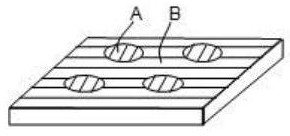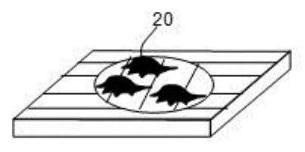Cell culture substrate, method for producing cell culture substrate, and method for producing spheroids
A technology of cell culture and culture substrate, which is applied in the direction of cell culture active agent, cell culture support/coating, tissue cell/virus culture device, etc. It can solve the problem of lack of mass production, inappropriate spheroids, and inability to form spheroids problems such as cells, and achieve the effect of excellent cell survival rate, uniform size and high survival rate
- Summary
- Abstract
- Description
- Claims
- Application Information
AI Technical Summary
Problems solved by technology
Method used
Image
Examples
Embodiment 1
[0154] 0.40 g (0.1 mmol) of 4-cyano-4-[(dodecylsulfanylthiocarbonyl)thio]valeric acid, 7.11 g (50 mmol) of n-butyl methacrylate, azo 33 mg (0.2 mmol) of bis(isobutyronitrile) was dissolved in 50 mL of 1,4-dioxane. After degassing by nitrogen bubbling for 30 minutes, the reaction was carried out at 70°C for 24 hours. After the completion of the reaction, the reaction solvent was distilled off under reduced pressure with a rotary evaporator, and the reaction solution was concentrated. The concentrated solution was poured into 250 mL of methanol, and the precipitated yellow oily substance was recovered and dried under reduced pressure to obtain an n-butyl methacrylate polymer.
[0155]0.9 g (0.3 mmol) of the aforementioned n-butyl methacrylate polymer, 8.14 g (72 mmol) of N-isopropylacrylamide, and 5 mg (0.03 mmol) of azobisisobutyronitrile were added to the test tube, and dissolved in 1,4 - Dioxane in 15 mL. After degassing by nitrogen bubbling for 30 minutes, the reaction wa...
Embodiment 2
[0161] As the metal mask in Example 1, a metal mask having a plurality of rectangular holes of 0.5 mm×1 mm was used, and a cell culture substrate was produced in the same manner as in Example 1.
[0162] The cells were cultured in the same manner as in Example 1, and 24 hours, 96 hours, and 144 hours after the inoculation of the cells, the state of the cells was observed with a phase contrast microscope, and it was confirmed that the cells adhered along the patterned shape in all cases. Attached to the proliferation, replaced with a new aforementioned medium. After 144 hours from cell seeding and after medium change, the substrate was cooled at room temperature for 20 minutes, and the side of the substrate was tapped by hand. Rolled spheroids that are uniform in size and elongated in shape can be recovered.
Embodiment 3
[0164] As the metal mask in Example 1, a metal mask having a plurality of circular holes having a diameter of 0.5 mm was used, and the same procedure as in Example 1 was used to produce a cell culture substrate.
[0165] The cells were cultured in the same manner as in Example 1, and 24 hours, 96 hours, and 144 hours after the inoculation of the cells, the state of the cells was observed with a phase contrast microscope, and it was confirmed that the cells adhered along the patterned shape in all cases. and proliferation, and replaced with a new aforementioned medium. After 144 hours from cell seeding and medium exchange, the substrate was cooled at room temperature for 20 minutes and incubated again at 37°C for 1 hour. With cooling, the colonies start to peel from the periphery to form spheroids, and it is possible to obtain spheroids adhered to the substrate.
PUM
 Login to View More
Login to View More Abstract
Description
Claims
Application Information
 Login to View More
Login to View More - R&D
- Intellectual Property
- Life Sciences
- Materials
- Tech Scout
- Unparalleled Data Quality
- Higher Quality Content
- 60% Fewer Hallucinations
Browse by: Latest US Patents, China's latest patents, Technical Efficacy Thesaurus, Application Domain, Technology Topic, Popular Technical Reports.
© 2025 PatSnap. All rights reserved.Legal|Privacy policy|Modern Slavery Act Transparency Statement|Sitemap|About US| Contact US: help@patsnap.com



